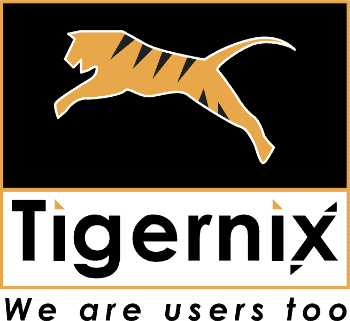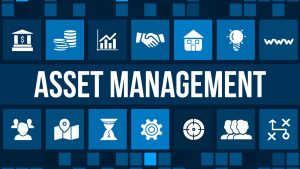Whatever industry a company belongs to, it is common for businesses to request a project proposal for partnerships and other reasons. The probability of a partner signing up or an institution endorsing a project greatly depends on the quality of the project proposal. While proposals need to be detailed, they need to be simple, straightforward and feasible. It should include all the essential details stakeholders require, including the expected timeline, a realistic budget, clear, measurable objectives, and focused goals. The way you write the proposal and its design are vital aspects companies ponder when preparing one. This is because the way it is formed demonstrates specific characteristics of the organisation itself. It speaks to the amount of organisation, leadership, passion and transparency within the business. For those who do not know whether their proposal is enough to make a statement, here is an easy guide to learning how to do so.
But First - What Why A Project Proposal In The First Place?
There are many kinds of project proposals, so it is always important to consider why one is sent in the first place. Some companies require a proposal for internal projects where the people you pitch your idea to could be your boss. It can alternatively be a project proposal to someone outside the organisation. While the way you frame each proposal may differ, your approach to writing your proposal remains the same.
Typically, a project proposal is to influence a buyer or get a client, receive funding, or convince your superiors to allocate specific resources to the project. As your end goal is, ideally, to successfully gain a partnership, a sale or a sponsorship, you need to think like the company you are hoping to approach. Therefore, companies need to first think like the other person at the end of the table to who they are pitching their idea. Understanding this helps you to frame the essential questions a prospective person would want to know and build a compact project proposal that answers them. While a project proposal is simply an idea put into words that are yet to be made a reality, it is vital that you feel confident enough to believe it should be implemented. All these factors must thus be considered when writing your project proposal.
What A Project Proposal Is Not
There could be a tendency to mix up a project proposal with other corporate materials required during the planning stage of a project. Here are a few standard documents people mistake to be the same:
It Is Not A Contract
Sometimes you may feel like you are drawing up a contract when sending a project proposal. This is especially true when you have been going back and forth with your clients on emails, conference calls and meetings. After many hours of discussion, clarifications and negotiation, they may ask for a project proposal. The client may want you to write what you exactly said the project was. In other words, it is common to feel your clients follow the first legal rule in business – get everything in print. Even when a client does this, requesting a project proposal cannot be interpreted as requesting or drawing up a contract. Usually, a project proposal is asked for even in long-standing relations so that the client has the time to lay out the task and assess whether it should go ahead. Having the essential details outlined in the proposal is a great way to compare the prices without prospective partnerships the client is possibly speaking with.
It Is Not A Project Plan
The main difference between a project plan and a proposal is that the former extensively discusses how the project will be implemented. On the other hand, a project proposal focuses on requesting funds for the project to be executed. In other words, a project proposal only presents the facts, whereas a business proposal must cover costs and attach a price quote. Unlike a project proposal, a project plan will have a call to action. This means the company is instructed to deposit the money to a given account in a specific way. Such minute details are generally not present in project proposals. It should be noted, however, that a project proposal does not ignore finances. Instead, a project proposal may have an estimate, whereas a project plan will indicate a precise amount.
It Is Not A Project Charter
Also known as a project definition document, a project charter must be short and precise. It is more formal and has the project’s objective than a project proposal. In contrast, the more detailed a project proposal is, the better the positive reaction it receives from prospective clients. Moreover, while a project proposal identifies what tasks must be carried out, a project charter is a document that officially authorises the project. Unlike a project proposal which occurs at the initial stage, a project charter is created after the project is approved and is in the planning stage. This also means a project charter cannot be made until the proposal is approved.
What Kind of Project Proposal Do You Have in Mind?
According to the type of company you are part of, and the project you have in mind, the kind of project proposal that needs to be written could be different from a usual proposal. The amount of information you put in will therefore differ accordingly. Here are some of the main types of project proposals a corporate body constantly works with:
A Formal Solicited Project Proposal
This refers to when a client officially requests a project proposal. The proper term for this is a ‘Request for Proposal’ (RFP). Unlike a general project proposal given to any person, an RFP allows you to customise it to the potential client’s direct demands and specific needs. Therefore, you must do thorough research on the company that requested it to ensure it fits the brief and the type of business you want to partner with. A typical RFP will clearly state what is required from the project, helping the team create a project proposal that directly responds to the requirements and needs of the potential client. This makes the project proposal extremely structured and specific. This form of project proposal leaves no room for misunderstandings; if written well, there is a higher chance of it being approved. Some people may find this relatively more challenging to write if the RFP is vague.
Informally Solicited Proposal
This is the opposite of a formally solicited proposal. No one essentially requests a project proposal. Instead, where you need partners, sending the proposal to a list of potential people who may be interested is common practice. It is similar to a corporate taking cold calling a potential client who never expected to be approached. This would mean a general project proposal is drafted, finalised and sent. As this is sent informally, you do not need to make it too detailed with every minute detail the project encompasses. It would describe the project goals, deliverables and methods but would, in simple terms, be regarded as a proposal that needs more specifics. Due to this, there will be a higher need for the parties to discuss more and finalise certain aspects.
Contrary to what people may think, sending informal, unsolicited proposals is a great way of approaching a business you have always wanted or believe is a good fit for the project. Hence, compared to carrying out ample research on the client that requested a proposal, the amount of research and effort required twice as much. This is because it is harder to create a proposal for a client that neither asked for one nor has any knowledge of the project. Communicating the viability of the project, therefore, becomes extremely important.
Proposals to Continue A Project
One of the most straightforward project proposals is a continuation project proposal. As the term indicates, this is where an update or reminder is sent as a proposal for an already ongoing project. This is typically seen in projects that are longer in duration. For example, if it is a financial partnership, it is normal to provide funds in stages. As a result, when one phase of the project is completed, a project proposal that informs the progress and has a breakdown of the finances required for the next is provided. Since the project has already been approved and the client is already on-board, creating the proposal becomes less stressful. At the same time, however, such projects demonstrate the significance of being transparent in the execution of their projects to ensure their sponsor keeps funding them.
Proposals to Renew the Project
If a project is suddenly terminated due to external factors and is in the process of being reimplemented, a renewal project proposal is required. This requires the team to make a persuasive proposal explaining the success of the previous project that was eventually terminated. In this situation, it may be hard to succeed with the same client, as the termination could lead the client to perceive your company negatively. Hence, the causes for the termination will be the main factor that will determine whether the proposal will be accepted and renewed by the same client.
Proposals When Your Original Plans Change
You need to submit a new proposal when your original plans change. Such a project proposal is called a supplemental project proposal. For example, you may have estimated that a certain amount is required to complete the project. However, due to external circumstances, the cost of resources may increase, leading the team not to need more resources to complete the project. Alternatively, the project may have progressed to a larger scale than was initially expected. The central aim of a supplemental proposal is to persuade the client to stay on board with the new amount requested, along with the timeline change. An update on the progress of the project and the value of continuing their contribution would be central.
The Professional Format of a Project Proposal
While the format of a project proposal will differ from the type of proposal you undertake, there are around five essential features a typical project proposal should entail.
Executive Summary
As indicated by its term, the executive summary is the section of your project proposal that provides an overview of the entire plan in less than a page. However, if your proposal is particularly long, keep your executive summary length to 5 to 10 per cent of the entire document. It provides an overview of the most important points, including a brief explanation of the background, objectives, deliverables and related information on the project. You do not need to write everything in one paragraph and can instead use short sub-headings to describe everything clearly. As this is the first thing a person reads, this project proposal piece must be written persuasively and should be attention-grabbing. Avoid examples or case studies in this part of the proposal, as you are expected to be succinct. However, it should be descriptive in terms of helping the reader understand the project’s complete picture. It should explain the reasoning behind the objectives and the impact it would either make on the client or society.
When writing an executive summary, you must first identify the problem the project hopes to solve, explaining why it is essential and relevant to your organisation. Remember that you need to have proper evidence to establish that there is a problem and to showcase that it affects a large number of people. Typically, companies carry out surveys to understand whether such a problem exists by collecting information on the percentage of people affected. Statistics and numbers are your best friend to drive your point home.
Secondly, you have to outline the solution you are proposing briefly. Note that the way you word your solution differs from arguing for a specific thesis in the abstract of a research paper. Instead, clients expect companies to demonstrate why their solution is the best and the only feasible solution.
Thirdly, q large chunk of your summary should ideally be about how the proposed solution will improve or impact people. It is necessary to include an overview of the estimated timeline, budget, risks and benefits and, most importantly, connect how the proposal aligns with the values your company upholds. Lastly, you can wrap up your summary by highlighting the importance of being part of a project that is beneficial to both parties.
Project Background
In this section, the proposal must elaborate on the history of the problem, explain whether research has been conducted in this area and consider whether any advancements have been made. Going into detail about these factors is essential, citing practical case studies and examples where necessary. The more insight you provide indicates the amount of passion and the organisation’s dedication and expertise on the subject. It also highlights the depth of understanding you have considered when creating a solution. This also means you need to scrutinize any previous work that has claimed to “solve” the problem with logical reasoning. It is vital to avoid baseless statements and argue why there is a need to present a solution that someone else may have already addressed. While you do need to explain this in quite some depth, do not at the same time waste a lot of pages on this section. Various sites note that the recommended total number of pages for the proposal is 4 to 7. Keeping in mind that a proposal will use images and creative styles to make it attractive to the reader, this does not leave much room to waste words on every section. Hence, ideally, the project background should only take 1 or 1.5 pages at the latest. It is sometimes easy to mistake this section as a “project description”. Note that the most significant way to differentiate between the two is that contrary to a description which requires information on objectives, finances and others, a project background is an attempt to justify the problem you have chosen to address.
Solutions and Approach
This would be the longest section of your proposal. Describe your solution comprehensively and explain how it will be implemented. In this part of the proposal, you need to explain the project management steps effectively, have a vision statement, the skills required, expected milestones, the role and responsibilities of each team, and the techniques used, including the reporting tools you will be using. It should also explain in detail the potential risks (also regarded as the risk mitigation strategy) the solution presents and how the company plans to respond in such a situation. Make sure to explain how the success of your solution will be measured. For instance, you will need to define the metrics and project deliverables you will use. Project deliverables are an essential aspect of a proposal that must be elaborated. Deliverables must be SMART, which stands for specific, measurable, achievable, realistic, and time-bound goals. This is the section stakeholders pay more attention to as it explains what you will be “delivering” at the end of the project. Whether, for example, the solution will be software, an upgrade or something else will have to be mentioned. Make sure to match your project timeline with the deliverables specified so the prospective client can assess at what time it can be expected to see “results”.
Financial Information
Providing a detailed budget is a mandatory requirement in any proposal. Hence, break down your costs into specific sections, whether direct or indirect. This includes the money you would ideally need to allocate for supplies, salaries, tools, etc. This is also known as a resource allocation plan. Long-term projects generally require finances to be divided according to stages with deadlines. Hence, it is also necessary to consider the changing financial rates so that no drastic changes need to be made or requested in the future. You may sometimes be required to present financial statements to back up the financial statements that are made. All this information is meant to help clients to forecast the amount of profit that will be gained, consider the company’s level of transparency, assess its cost-effectiveness and most importantly to compare the budgets with other prospective projects your client wants to undertake. While comparing the rates with other similar projects cannot be avoided, do not lower your cost on the incentive of successfully winning over the client. Attempting to succeed in partnerships by solely relying on finances is not a good idea as it would only lead to you losing the profitability of your own project.
Strong Conclusion
Summarise the entire proposal at the end concerning the problem, solution and benefits. It is important that your proposal is consistent in the ideas presented and that they support one another. Do not, at this point, touch on factors that have not been explained in the previous sections. This is the last thing the reader goes through. After presenting loads of information, your conclusion should be a breather that simply touches on the most important points. It should be short and ideally, should not span across multiple pages. Show that your business has the drive, passion and confidence to see through the success and completion of this project. A company’s attitude, after all, speaks more to the viability of a project rather than the soundness of the theory explained on paper.
Other Things to Add To Your Check List
The language, tone and the way the project proposal is organised are important factors to consider. Numerous edits, proofreads and rechecks will have to be checked multiple times before the finalised proposal is ready. Present your proposal to your team members and see how they respond. Ask for their feedback and make changes. Remember, your proposal will, at the end of the day, be pitched to someone who does not know it. Hence, the chances of your client having a similar reaction to your teammate who is not involved in the project would be valuable points to note and consider. As a final point, make sure to design your proposal to be visually appealing. Do not fill up the proposal with paragraphs. Find creative ways to demonstrate the problem you are trying to solve and the benefits a potential client can enjoy.






